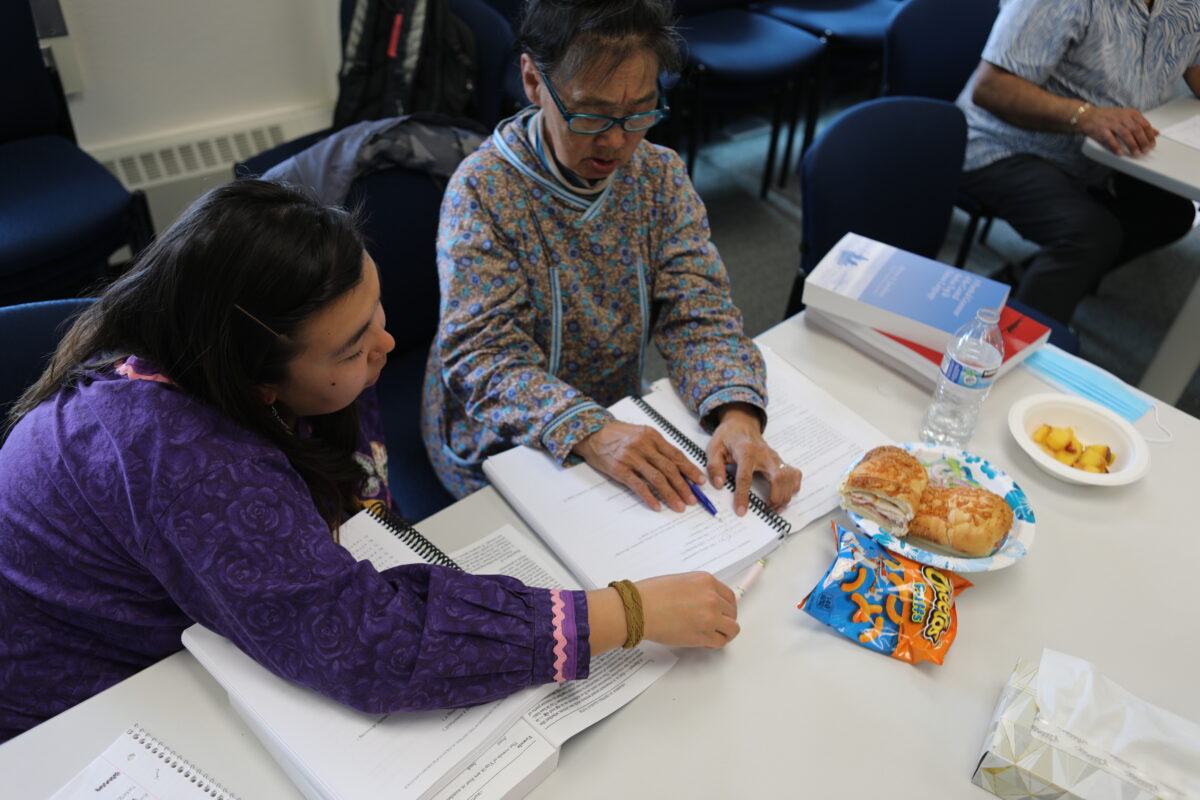Alaska is home to more than 20 Alaska Native languages, passed down and preserved for thousands of years. But over the last century the number of fluent speakers has declined as a result of colonization. One woman in Nome is using social media as a tool to teach the Inupiaq language.
Gail Smithhisler runs a Facebook page called, “Iñupiaq Word of the Day.” She posts daily videos of herself teaching the meaning, spelling, and provides a phonetic pronunciation of words and phrases from the language.
The “Iñupiaq Word of the Day” started in 2010 on Facebook featuring community members sharing words and phrases in various Iñupiaq dialects.
Smithhisler grew up hearing Iñupiaq spoken by her grandparents and elders in Nome. After she began running the page in 2020, she enrolled in UAF’s ‘Introduction to the Iñupiaq Language’ class at Nome’s Northwest Campus taught by Josie Bourdon.
“I felt soulful and happy. After each class I was very mentally drained from trying to retain all the information, but I was so hungry to learn more. I was like, ‘this is what I needed.”

Iñupiaq is spoken by the indigenous peoples of Northern Alaska and a small section of Canada. It is closely related to the Inuit languages of Northern Canada and Greenland. Along with other Alaska Native languages, Iñupiaq is taught at University of Alaska campuses across the state and even in immersive classrooms. In 2007, Rosetta Stone, a Virginia-based company that produces multimedia language courses collaborated with a Kotzebue resident to create an Iñupiaq language curriculum.
Smithhisler draws inspiration from elders, and utilizes their knowledge of pronunciations for her videos. She considers her teacher, Josie, as her mentor.
“The words that I post now, I make sure that they’re translations that I got from Josie [her teacher] or from other elders that participated in class with us, or their words that I’m familiar with.”
Smithhisler created a TikTok account in 2020 and has since received tens of thousands of views, and thousands of followers. She said TikTok is more popular among younger age demographics, and bridges the gap in language revitalization.
“The health of our language kind of depends on young people, as well as our older people who are fluent. Because our elders and our older people that are fluent, they’re not going to be around forever.”
@topkaruk Pikpaivagipkin! (Seward Peninsula Dialect) “I am so proud of you!” #alaskanative #indigenoustiktok #iñupiaq #alaska #iñupiaqwordoftheday
♬ Breathless – William Prince
Statistics gathered in a 2007 study by the Alaska Native Language Center at UAF revealed that only 13% of the Iñupiaq population could speak the language. Over a decade later [2021] that percentage [22%] had nearly doubled, according to a study from the National Parks Service.
Smithhisler hopes that percentage continues to increase.
“If you are trying to learn, don’t get discouraged when someone corrects you. If someone is correcting you, it is probably coming from a good place, even if the delivery is not the greatest. I’ve experienced that a lot myself and I just have to, you know, not take it personally.”
Smithhisler taught a three-day virtual workshop earlier this year (April) to Bering Straits Native Corporation (BSNC) shareholders and descendants. The workshop was recorded and is available on YouTube.
Photo at top: Gail Smithhisler. Photo courtesy of Gail Smithhisler.





